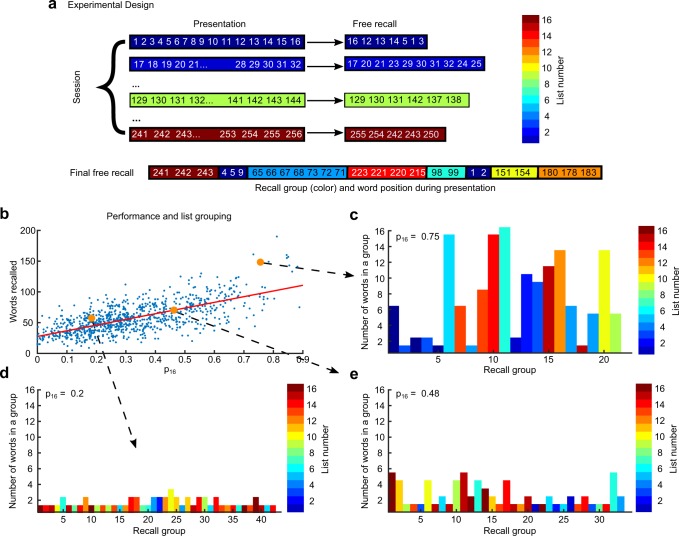Figure 1.
Experimental design and list-grouping results. (a) Experimental design - each day 16 lists were presented to human participants (colored lines on the left, with numbers representing serial presented position of the word during the day, and color representing the list number from blue to brown with color code presented in the right), after presentation of a list participants recalled as many words as they could (colored lines in the middle with a serial position of recalled words); at the end of some days participants performed final free recall (FFR), where they recalled as many words presented during the day as they could (bottom line with each recalled word colored according to the presentation list). (b) Number of recalled words during FFR vs. grouping measure p16 (see details in the text); red line denotes linear fit. (c–e) are examples of FFR trials for three levels of grouping: high (c), low (d) and intermediate (e). All words consecutively recalled from the presented list are shown as a vertical column with color corresponding to list number and height to the number of words in the sequence. High level of grouping (c) is characterized by consecutive recalls of many words from the same list, sometimes interleaved with 1 or 2 words from other lists. Low level of grouping (d) is characterized by frequent switches between lists with 1 or 2 words recalled consecutively from the same list. Intermediate level of grouping (e) shows a mixture of high and low level grouping.

